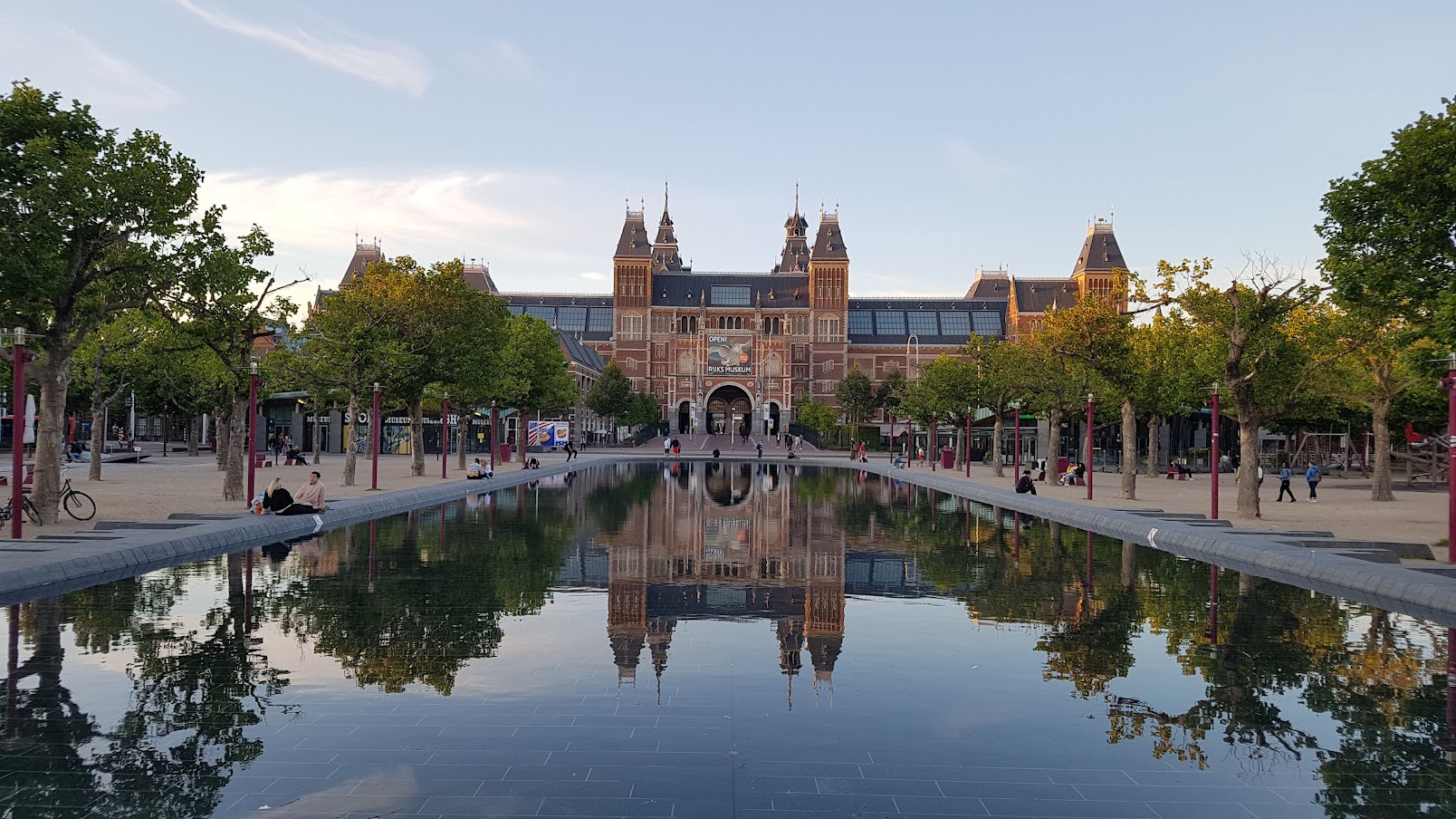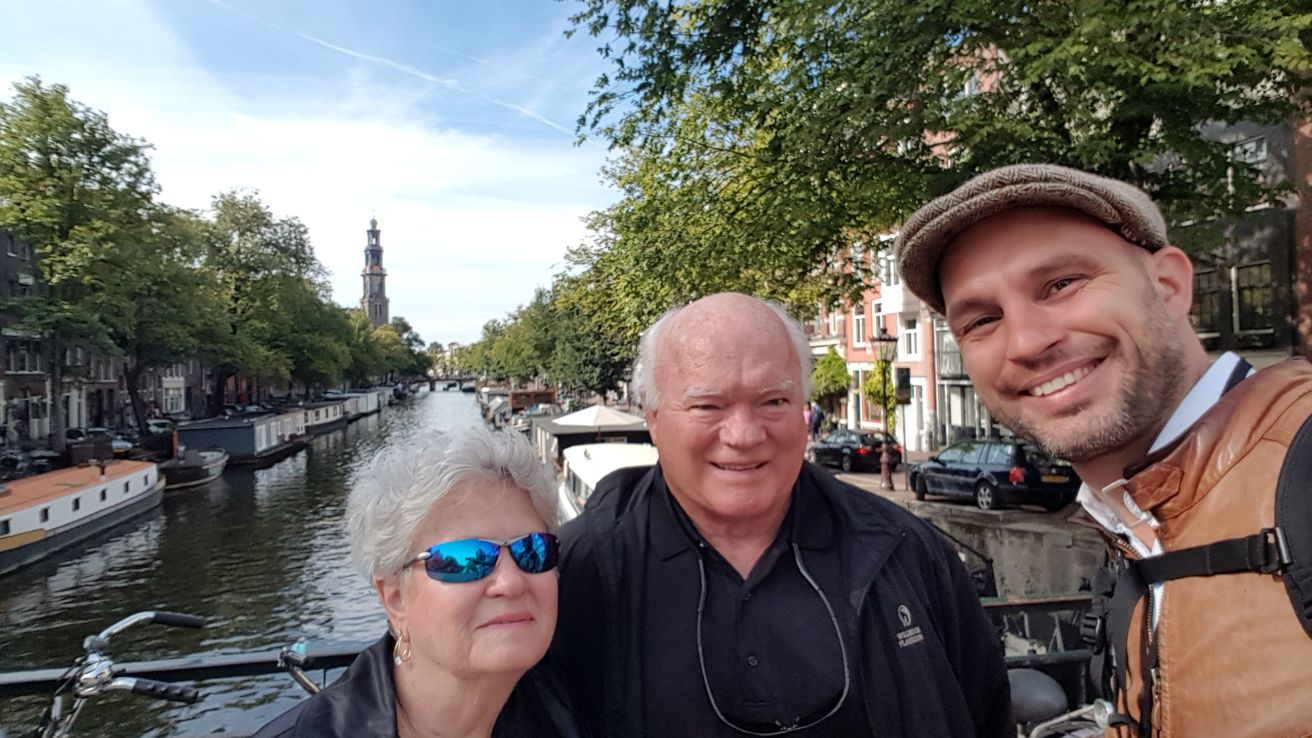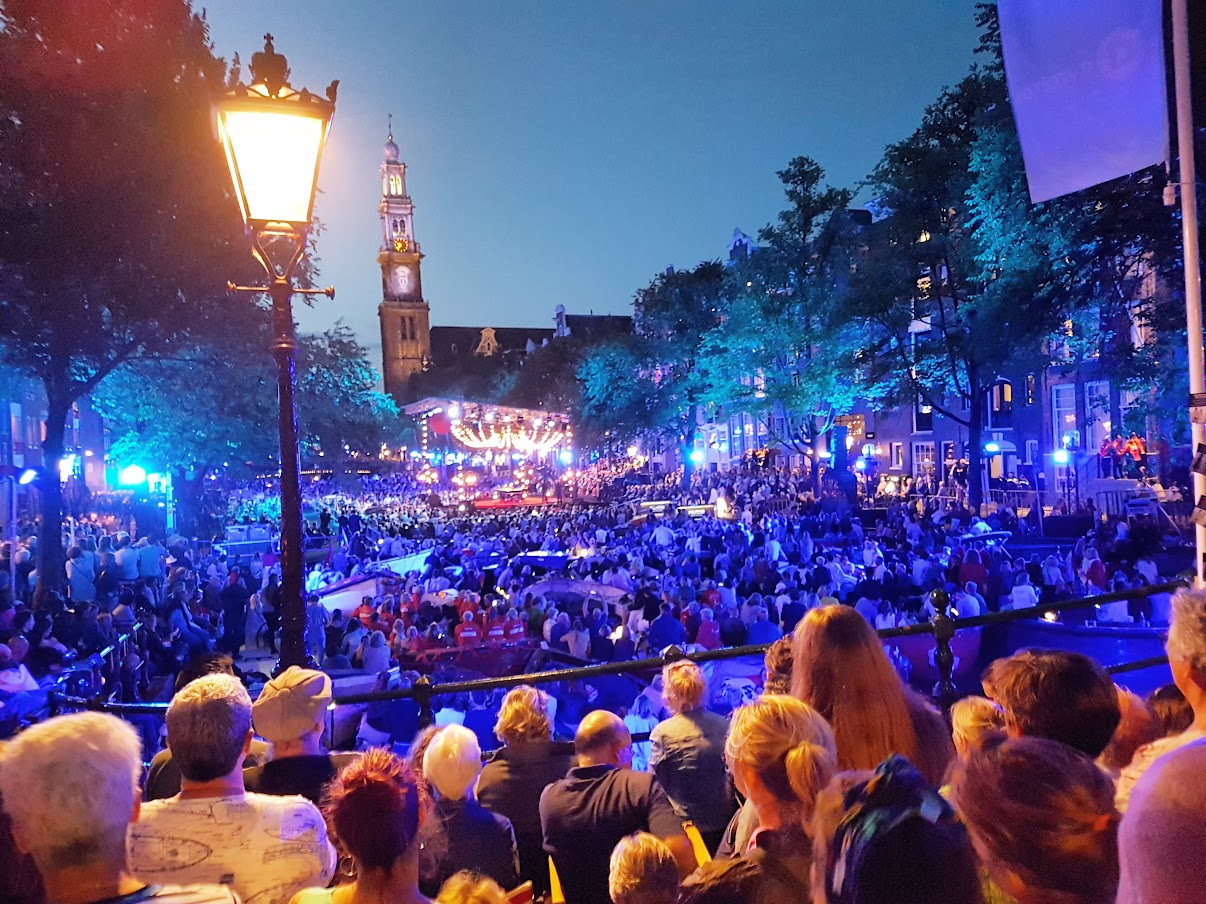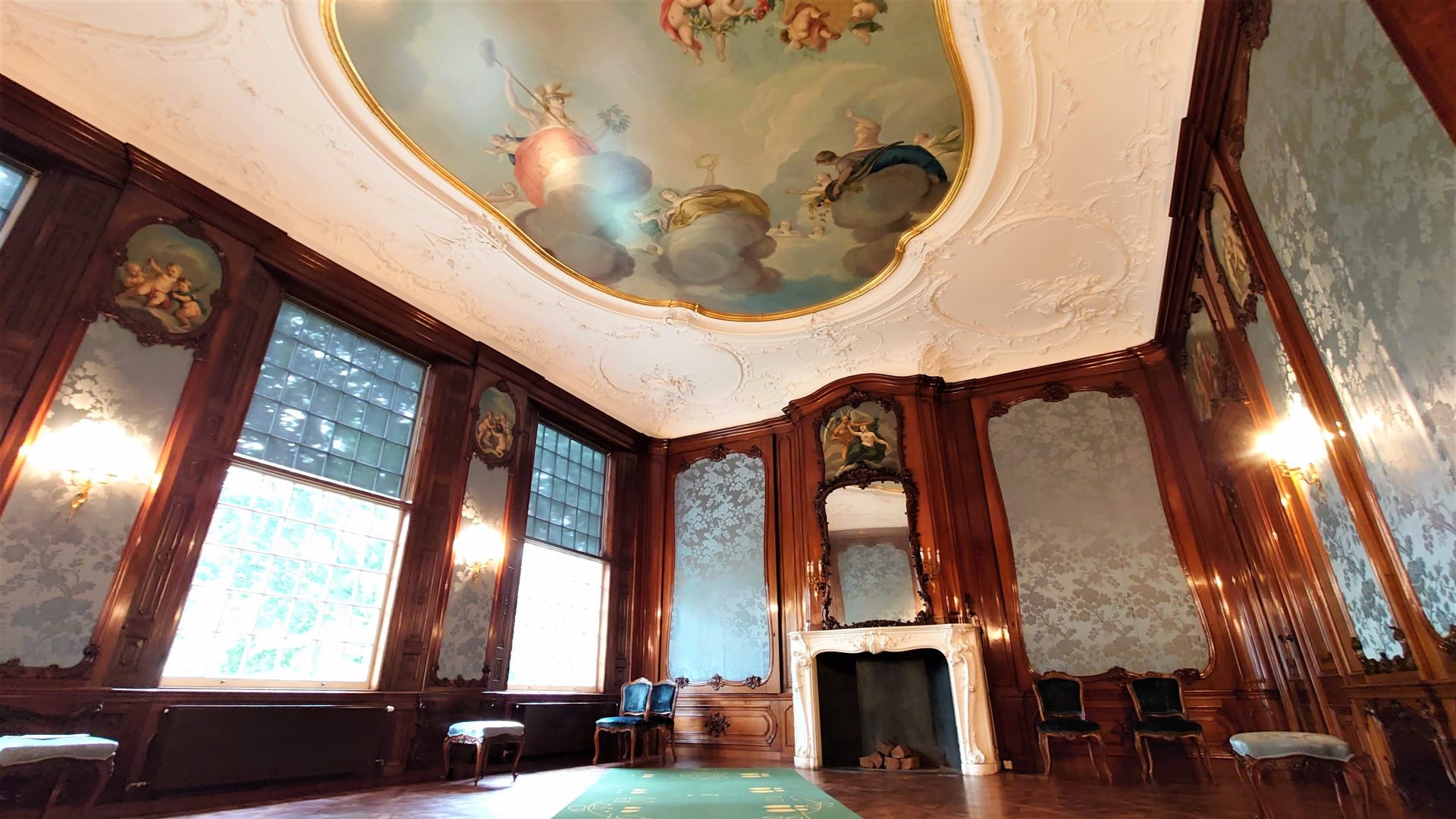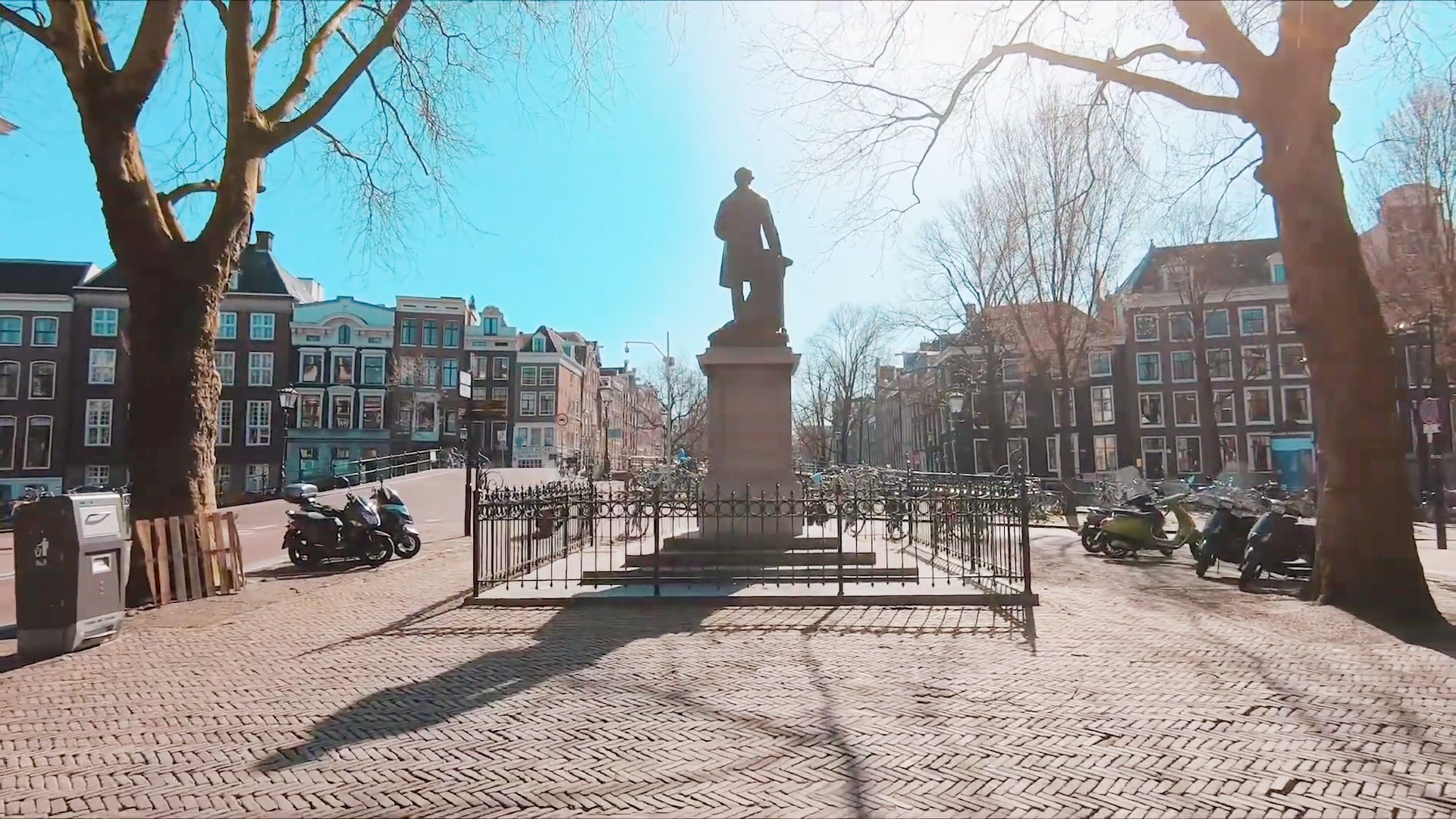A history of tall buildings in Amsterdam
17th century
Although Amsterdam never was a city known for an obsession with the perpendicular, the city had an impressive skyline since the late Renaissance. From the 17th century until the 19th century Amsterdam’s skyline had an uniquely harmonious look, which was the result of one architect: Hendrick de Keyser. Besides the seven Renaissance towers of Amsterdam (see picture above), Hendrick de Keyser designed the stock exchange, which he also adorned with one of his characteristic bell-towers.
In addition to Hendrick de Keyser’s small forest of Renaissance spires, there were some other buildings that visitors could see from afar when approaching Amsterdam. These were the city hall and the New Church on Dam Square, and the Admiralty Building, which is now the National Maritime Museum.
19th century
In the 19th century the city went through some radical changes (though thank Goodness nowhere near as radical as Paris). During the first half of the 19th century, a time of immense poverty in Amsterdam, two of Hendrick de Keyser’s most striking towers (the Haringpakkerstoren and the Jan Roodenpoortstoren) were demolished because of neglection and instability.
During the second half of the 19th century Amsterdam began to flourish again financially and this was expressed in many large and ambitious building projects. The architect Pierre Cuypers presented himself as a new Hendrick de Keyser, being responsible for almost every new addition to the rapidly changing skyline of Amsterdam. Besides five churches, he designed the massive new buildings of the Central Station and the Rijksmuseum.
20th century
The age of skyscrapers was almost completely ignored in Amsterdam until the construction of the 150 meter tall Rembrandt Tower, next to Amstel Station, in 1993. It is still by far the city’s tallest building, even though a lot of office towers were erected since. But Amsterdam will never be a skyscraper city, because of the taboo on tall buildings in, or near the historical center. That this taboo is justified is proven by the 90 meter tall Pontsteiger building, that, although located quite far outside of the center, ruined the view of the Hendrick de Keyser’s Westertoren, when seen from the Prinsengracht, looking north.
1: Westerkerk tower
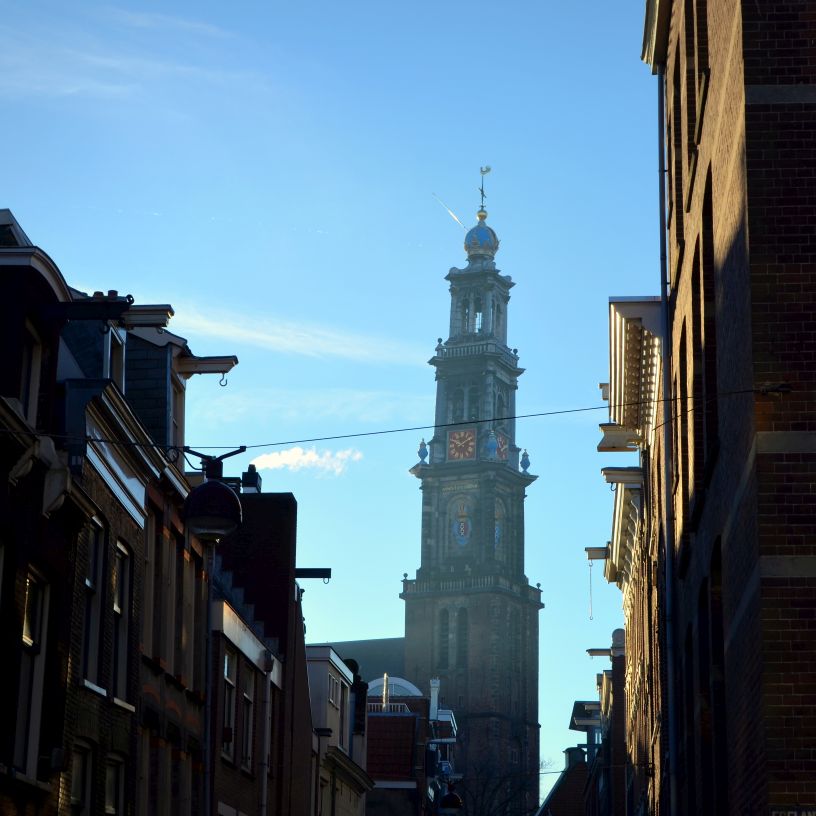
height: 87 meters
architect: Hendrick de Keyser
year of completion: 1631
The Westertoren, the tower of the Wester Church, is the tallest and most famous tower of Amsterdam. The striking, narrow, tower, constructed in Dutch Renaissance style, was the tallest building in Amsterdam for 362 years, until the Rembrandt Tower topped out at 150 meters in 1993.
The Westertoren isn’t actually that tall for a church tower in a major city; in the Netherlands the Nieuwe Kerk in Delft, with 109 meters, and the Domtoren in Utrecht, 112 meters, were much taller for centuries. But since Amsterdam joined the Protestant uprising against Catholic Spain, in the late 16th century, the local government always wanted to emphasize that the city was not dominated by religious matters. And so Hendrick de Keyser’s majestic tower ruled the sky of Amsterdam for nearly four centuries.
2: Zuiderkerk tower
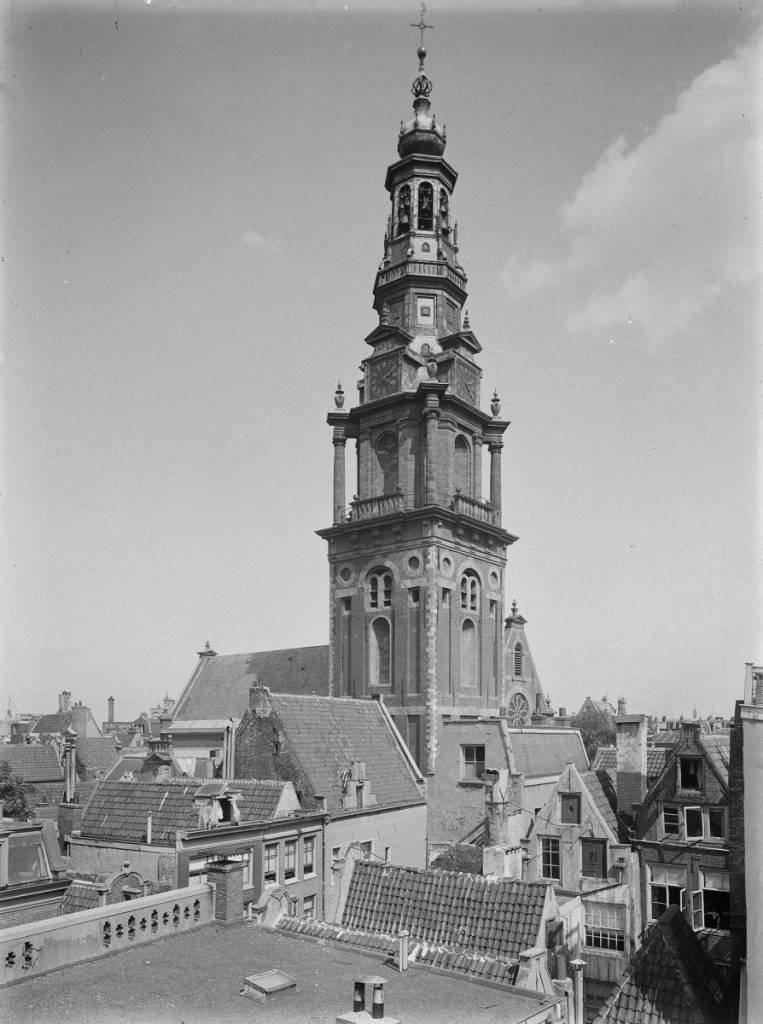
height: 70 meters
architect: Hendrick de Keyser
year of completion: 1614
The Zuiderkerk was the first large protestant church built by Hendrick de Keyser in Amsterdam. Its eye-catching tower was a defining landmark in the neighborhood ever since. The beautiful church nearly didn’t make it through the post-war ‘reconstruction’ demolition madness. In 1970 it was at the point of collapse. Thankfully it was restored. The Zuiderkerk used to be Rembrandt’s local church. The artist had the misfortune of having to bury three of his children in it. The architect Hendrick de Keyser is also buried here.
In the 19th century Claude Monet painted the church tower of the Zuiderkerk and its reflection in the water of the Groenburgwal, this is now one of the most popular sites for taking photographs in Amsterdam.
3: Oudekerk tower
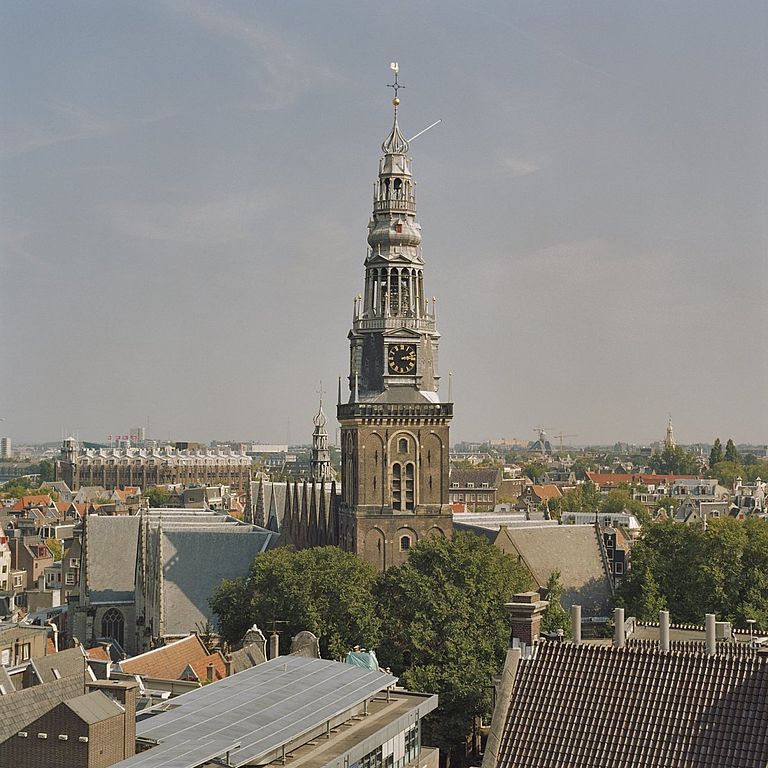
height: 70 meters
architect: Joost Bilhamer
year of completion: 1565
The church tower of the Oude Kerk (old church) is a defining landmark of Amsterdam since the mid 16th century. The church itself is the oldest building in Amsterdam, dating back to the 13th century, so its name is quite appropriate. The old church is one of only a few Gothic buildings in Amsterdam, but the tower was altered and heightened between 1563 and 1565 in Dutch Renaissance style, most likely by the renowned engineer / architect Joost Bilhamer.
4: Rijksmuseum
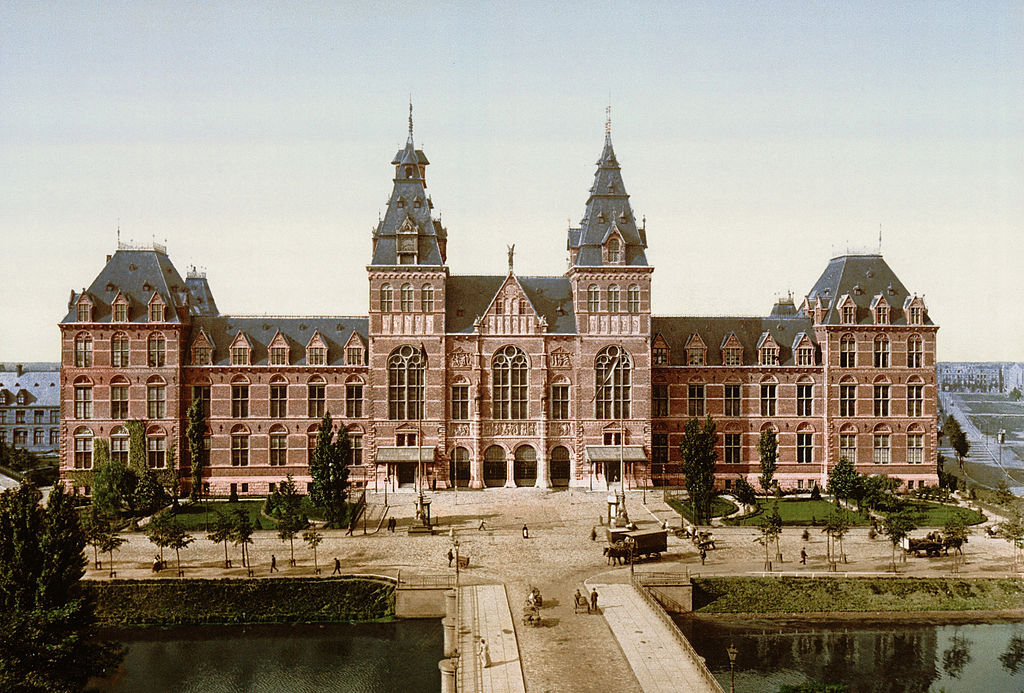
height: 53 meters
architect: Pierre Cuypers
year of completion: 1885
Two of the most famous large historical buildings in Amsterdam, the Rijksmuseum and the Palace at Dam Square, are almost exactly the same height – the Rijksmuseum’s towers are about 50 cm taller. Yet the Rijksmuseum was a much more noticeable addition to Amsterdam’s skyline. While the Palace found itself in the middle of a mass of huge new buildings, such as the new post-office (now Magna Plaza) and the Central Station, the Rijksmuseum towered over the countryside at the edge of Amsterdam. It was by far the largest building in that part of the city and it still is. Its architect, Pierre Cuypers, envisioned it as a modern version of a medieval city gate – a sensation you can still get when you walk, or cycle, from Museum Square into the heart of the city, through the giant arch in the middle of the museum.
The exuberant building, inspired by Dutch Gothic, as well as Hendrick de Keyser’s Dutch Renaissance architecture, proved to be too much for the prevalent Protestant taste of the day: many people hated it, among them King Willem III, who declined his invitation to the building’s inauguration.
5: The ‘Wolkenkrabber’
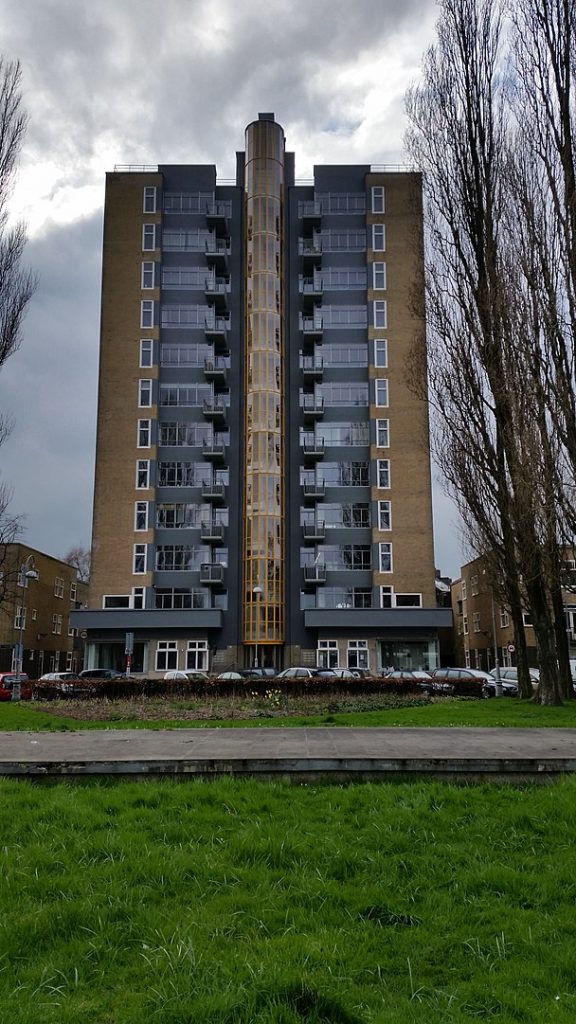
height: 47 meters
architect: Jan Staal
year of completion: 1932
How extremely unaccustomed the people of Amsterdam were to the modern tendency to reach for the sky can be exemplified by the history of the 12-story house, which became known as ‘the Skyscraper’. The Dutch word Wolkenkrabber literally translates to ‘cloudscratcher’. Completed in 1932, it was the first tall housing flat in Amsterdam. People were fascinated and even frightened by its ‘dizzying heights’. But its highest apartment is located at a mere forty meters above the ground. A year before ‘the Skyscraper’ was completed, in 1931, New York’s Empire State Building opened to the public. With its 381 meters it was almost ten times taller than Amsterdam’s 12-story house.
Still, the 12-story house was a remarkably modern building, with its Art Deco like glass and steel design, that still serves as the focal point in the middle of H. Berlage’s beautifully planned Rivierenbuurt neighborhood.
Honorable mentions:
Posthoornkerk
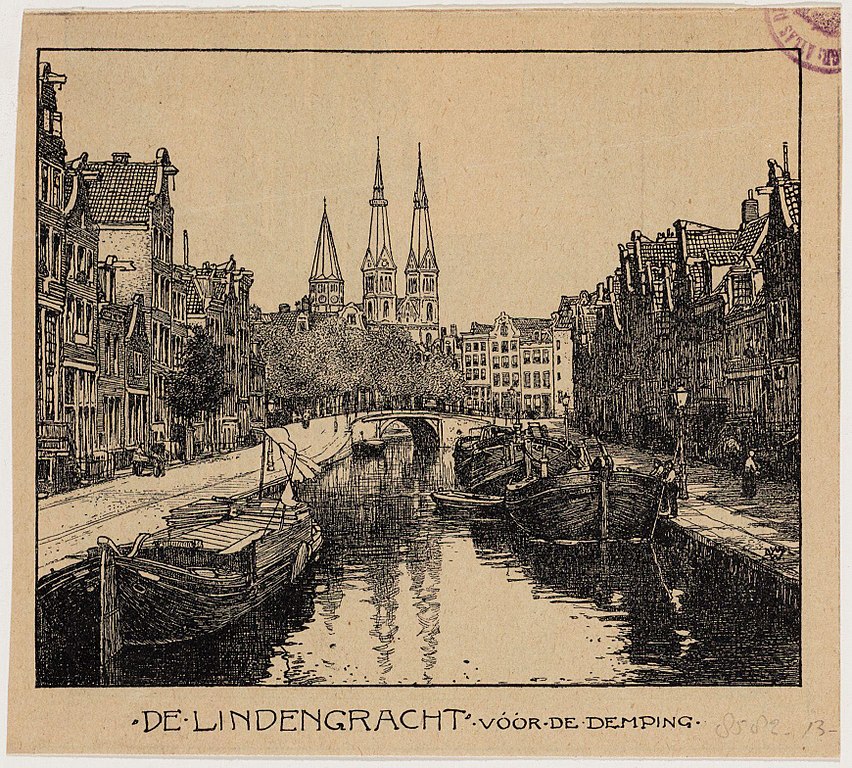
height: 64 meters
architect: Pierre Cuypers
year of completion: 1860
In the middle of the Haarlemmerstraat the Posthoornkerk rises to quite a prominence. It is one of many Catholic churches that the devout Catholic Pierre Cuypers constructed all over the Netherlands. The better one gets to know the Netherlands, the more one realizes that there are 19th century catholic churches all over the place. Most of them look similar, because most of them are designed by Pierre Cuypers.
The reason for this sudden boom in church construction is simple: the country’s raison d’etre was a religious war against catholic Spain and for nearly three hundred years Catholics had to hold their congregations in churches that were not recognizable as such. But in the 19th century this ban was lifted and the Dutch catholic community tried to make up for lost time – boosted by huge financial injections from the Vatican.
And then: the tower that never was…
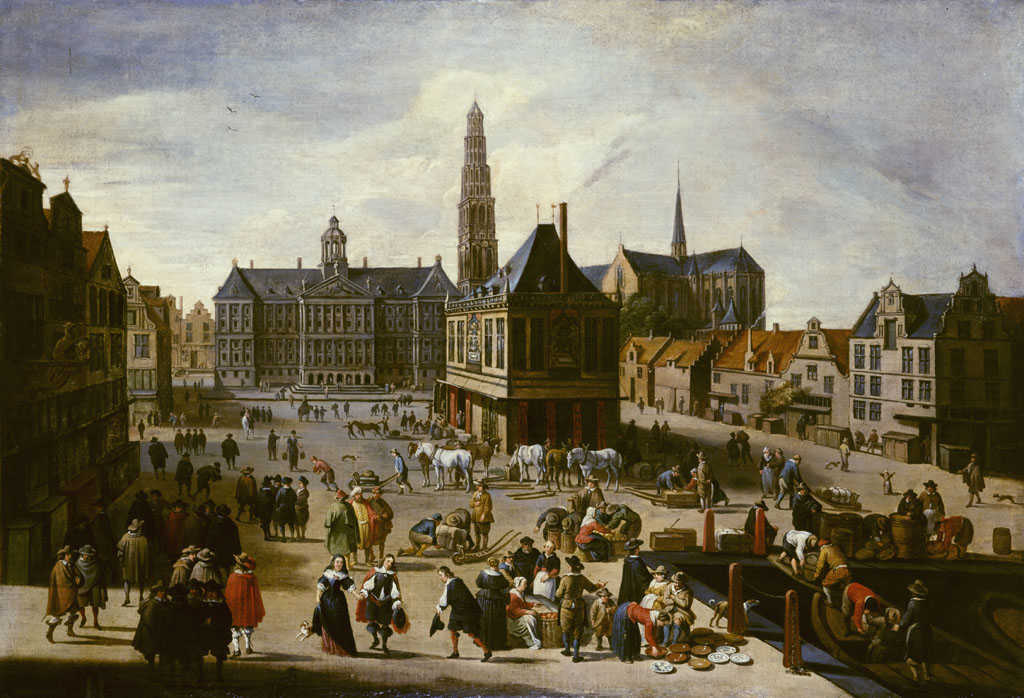
height: 115 meters
architect: Jacob van Campen
year of completion: never completed
In 1645 a massive fire raged through the New Church at Dam Square. The fire caused enormous damage to the church and destroyed the adjacent medieval city hall. Because Amsterdam was the most powerful and wealthy city in the world at that time, the city council decided that the east corner of Dam Square should be rebuilt in unrivaled splendor. Two massive projects were proposed: the new city hall – which is now the Royal Palace – and a greatly improved version of the New Church, complete with a massive church tower, which would have been the tallest tower in the Netherlands.
Jacob van Campen was to be the leading architect of both projects. The city hall was built, but during the process van Campen fell out with the authorities and he resigned. Meanwhile an Anglo-Dutch war suddenly depleted the city’s resources. On top of that many members of the city council didn’t want a religious symbol that would tower so high above their new civic palace. And so all the necessary support for the tower dwindled. The unfinished tower was restructured in such a way that it disappeared into the facade of the church. And there it remains.


